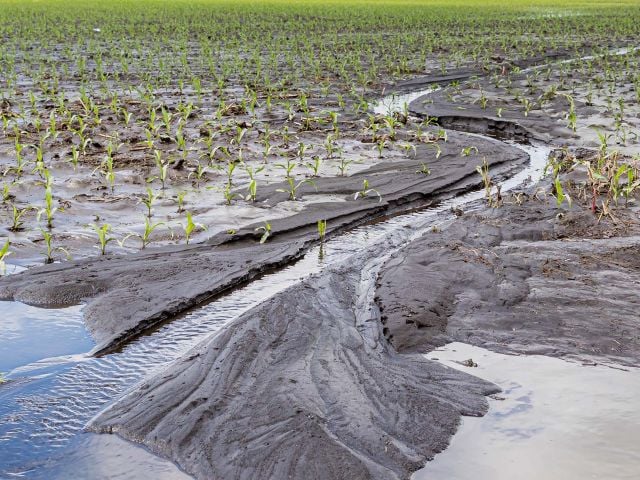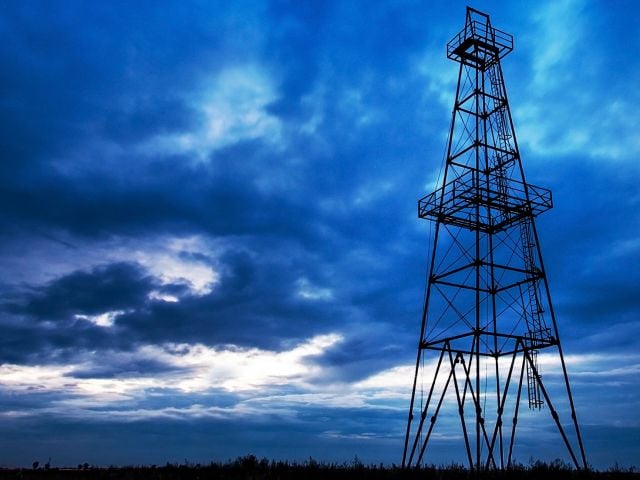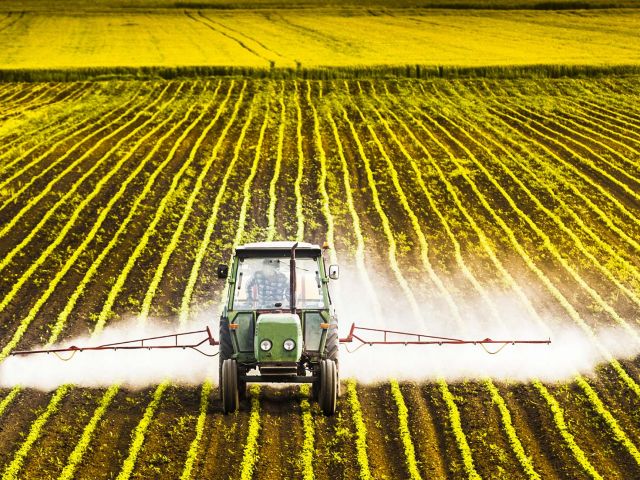Displaying 25 - 48 of 7591
Research
Forbes Fat Cats Collect Taxpayer-Funded Farm Subsidies
The federal government paid out $11.3 million in taxpayer-funded farm subsidies to 50 billionaires or farm businesses in which they had an interest between 1995 and 2012, and changes to the farm bill being weighed by Congress could well increase their take.

Research
Washout
Media attention has understandably focused on flooding, especially given the devastating floods that have repeatedly struck the region in recent years.This year, it looks as if the Midwest will dodge the bullet – flooding has been damaging and heart-breaking for those affected, but nothing yet has resembled the scope and devastation of the 1993 and 2008 floods. But the Corn Belt's rich soil and

Research
Price Supports
The House and Senate versions of the pending farm bill are supposed to save $47 billion by repealing three subsidy programs: direct payments, counter-cyclical payments and the average crop revenue election. But both bills would then use almost three-quarters of those savings – about $35 billion – to fund a suite of new farm income support programs designed to put a higher floor under crop prices

Research
Cuomo Aide’s Oil/Gas Investments Questioned in N.Y. Fracking Debate
As New York Gov. Andrew Cuomo nears a decision on whether to lift the state's moratorium on shale gas development, filings with the state ethics commission reveal that one of his top advisors may be in a position to benefit personally from the outcome.

Research
Impact of Scaling Back
View and Download the report here: Impact of Scaling Back Crop Insurance Premium Subsidies

Research
Sugar in Children's Cereals
Parents have good reason to worry about the sugar content of children's breakfast cereals, according to an Environmental Working Group review of 84 popular brands.

Research
Corn Cop Out
When it comes to the massive amounts of nitrogen floating down the Mississippi River, lobbyists for the National Corn Growers Association and the American Farm Bureau Federation love to point fingers at everyone else – rather than look in the mirror

Research
Chemical Makers Inform Investors, Not The Public
The chemical industry has no trouble compiling production and sales information to give to investors on a quarterly basis. When human health or the environment are on the line, however, providing similar information to the Environmental Protection Agency is apparently too much of a burden.

Research
Cracks in the Facade
An Environmental Working Group investigation by Senior Counsel Dusty Horwitt has uncovered evidence in a long-forgotten federal report and other documents that chemicals from hydraulic fracturing of natural gas wells contaminated drinking water used by two West Virginia families. These graphics illustrate how the "fracking" chemicals might have reached the Parsons and Hagy families' water wells.

Research
What Scientists Say About Vitamin A in Sunscreen
New sunscreen rules will do away with the worst hype in sunscreen marketing. But they don't address concerns about ingredient safety, particularly a form of vitamin A which has become common in sunscreen and other skin products.

Research
Bay out of Balance
Year after year, vast amounts of pollutants pour into Chesapeake Bay, fouling the largest estuary in the United States and ultimately creating large dead zones in waters that once teemed with life. For decades, many have lamented the decline in the bay's health, but efforts to stop the ongoing damage and restore this once-pristine jewel have so far been largely fruitless.

Research
Will the Real Ethanol Beneficiaries Please Stand Up?
Eight years ago, the ethanol industry was keeping up the pretence that corn ethanol was a “bridge” to advanced biofuels. But figures like these, derived from the Renewable Fuels Association's (RFA) own Annual Industry Outlook, tell a different story.

Research
Throwing Good Money at Bad Land
Thanks to five decades of bad policy decisions, a quirk of geology underlaying hundreds of thousands of acres of California's Central Valley has snowballed into a multi-million dollar taxpayer boondoggle that continues to pose an environmental threat to the fragile San Francisco/San Joaquin Bay-Delta estuary.

Research
FCC downplays cell phone radiation risks
On September 20th, 2010 the Federal Communications Commission (FCC) overhauled its website (www.fcc.gov/cgb/sar/) to downplay the health risks of cell phone emissions and raise questions about the value of relative SAR ratings of different phones. The FCC's altered webpage is full of internal inconsistencies and at odds with latest research on cell phone radiation.

Research
BPA Coats Cash Register Receipts
EWG found BPA on two-fifths of the 36 thermal paper receipts tested. Samples were gathered from major retail outlets including McDonald's, CVS, KFC, Whole Foods, Walmart, Safeway and the U.S. Postal Service.

Research
Polluted Runoff: A Broken Promise Threatens Drinking Water in the Heartland
The 1985 federal farm bill created a conservation compact between farmers and taxpayers. In return for generous farm subsidies, farmers agreed to take steps to cut erosion and polluted runoff from their most vulnerable cropland, and to not drain wetlands unless they mitigated the loss.

Research
Less Farm Pollution, More Clean Water
The federal farm bill is scheduled for reauthorization in 2018. The conservation title of a new farm bill is a remarkable opportunity to jump-start progress toward clean water, clean air and a better quality of life for both rural and urban Americans – but only if we are ambitious and reach for fundamental changes in the title.

Research
EWG Investigates: Mr. Pay to Spray, Michael Dourson
President Trump has nominated Michael Dourson to oversee chemical safety for the EPA, even though Dourson has repeatedly sought to weaken chemical safety standards on behalf of polluters for a price.

Research
Hidden Carcinogen Taints Tap Water, Consumer Products Nationwide
An industrial solvent classified as a likely carcinogen, which is also a common impurity in cosmetics and household cleaners, was detected in samples of drinking water supplies for nearly 90 million Americans in 45 states, according to testing data from local utilities analyzed by EWG.

Research
Introducing EWG Standards
When it comes to drinking water, getting a passing grade from the government does not mean water is safe.

Research
California Proposes Safe Level for Roundup More Than 100 Times Lower Than EPA Limit
In a landmark rule with global repercussions, California state scientists are preparing to issue the world's first health guideline for Monsanto's glyphosate herbicide based on its cancer risk. The state's proposed safe level is more than 100 times lower than the current federal standard.

Research
Under New Safety Law, EPA Picks First 10 Chemicals for Review
The safety reviews could lead to bans or restrictions on a number of hazardous chemicals in consumer products and workplaces, including asbestos, paint strippers

Research
Big Market for Black Cosmetics, but Less-Hazardous Choices Limited
EWG's Skin Deep® adds more than 1,000 products marketed to Black women

Research
BPA Bombshell
Exposure to BPA has been linked to cancer, infertility, brain, nervous system and cardiovascular abnormalities, diabetes, obesity and other serious disorders.
